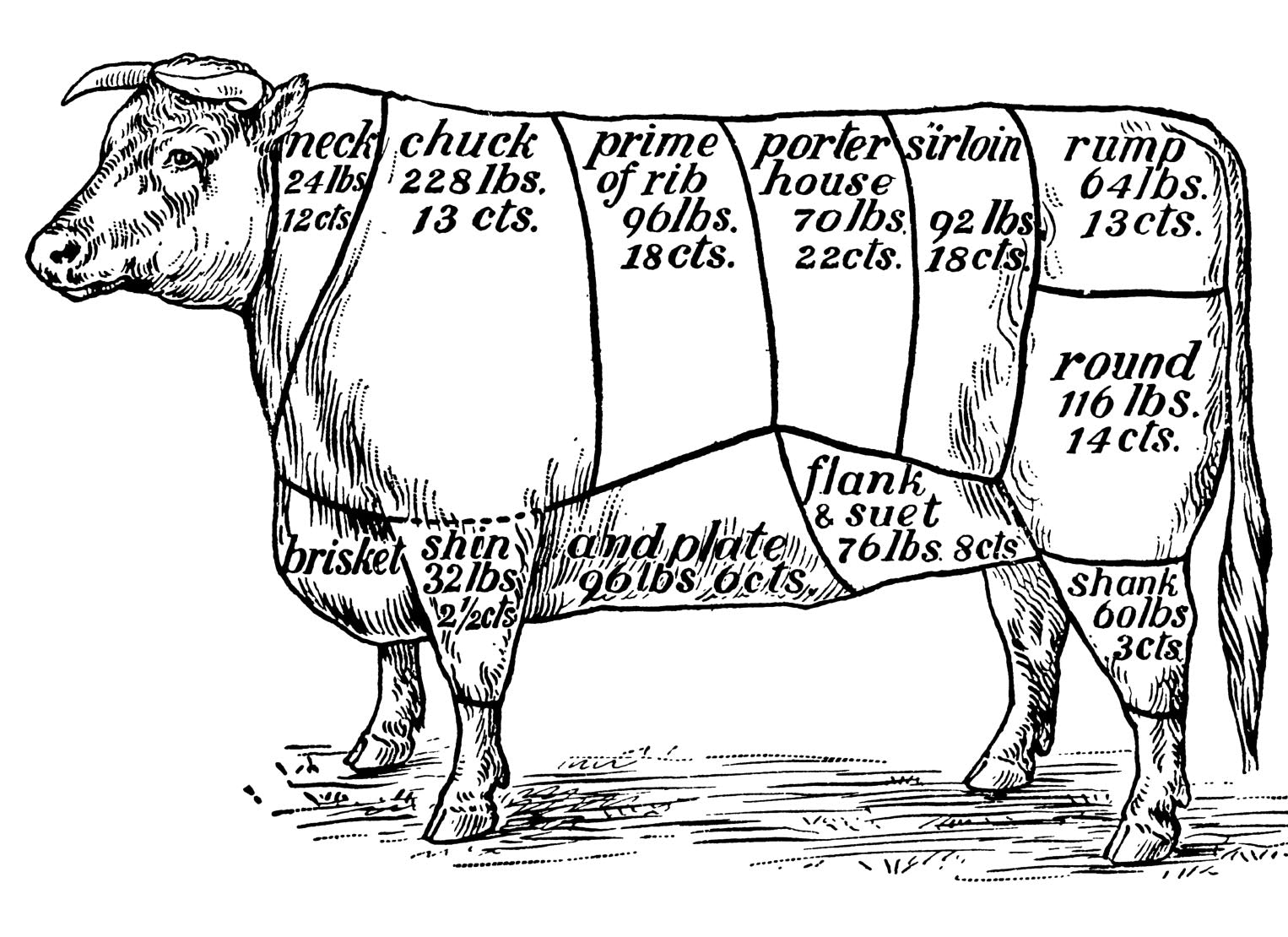What's the deal with grass fed beef?
One hundred years ago, all meat was mystery meat. I’m not saying it was Spam, but until we made rules about meat production and sale, butcher shops were the Wild West of food shopping. Producers could get, well, creative without getting in trouble, and as much as we all love normal surprises, nobody wants a meat surprise.

So, when enough people got tired of being grossed out they established the FDA, which has been regulating the heck out of meat ever since.
One of the FDA’s tasks is designating and regulating labels for our meat, which are super helpful once you can decode them.
Let’s focus on beef today, shall we? Allow me to break down the differences in beef labels, both those that describe the quality of meat, and those that describe the quality of that meat’s former life.
Meat quality, which basically means its potential for deliciousness, is ranked by grade. The highest grade is prime, followed by choice, then select.
If I told you that it was the other way around, you’d still probably believe me because these words are straight up synonyms and we live in a perverse world where small coffees are called tall.
These grades mainly refer to the fat distribution throughout the beef, which is an important aspect of meat’s flavor, along with cut. Keep an eye out for later posts delving into this a bit more.
Prime beef, used more in steakhouses than normal houses, has tons of fine marbling of fat, so every bite has that flavor.
Choice beef, the most common grade, has less marbling but exists across a broad spectrum, so go for the cuts that show marbling but are still pink (indicating a younger cow with more tender meat).
Select beef is taken from young cattle, whose meat is tender but lacks marbling. The fat is usually around the edges rather than dispersed throughout the cut. It’s fine, just put it in a curry or whatever if you want flavor.
Standard/Commercial/Utility/Cutter/Canner beef is what Upton Sinclair was talking about, I assume. Enough said.
Onto the quality of treatment!

The above grades offer no indication of how the cow lived, which is where certifications and labels like organic, grass-fed, and naturally-raised come in.
Organic beef, as regulated by the USDA, meets the following standards:
- Allowed year-round access to the outdoors except under specific conditions
- Raised on certified organic land meeting all organic crop production standards
- Raised per animal health and welfare standards
- Fed 100 percent certified organic feed, except for trace minerals and vitamins used to meet the animal’s nutritional requirements
- Managed without antibiotics, added growth hormones, mammalian or avian byproducts, or other prohibited feed ingredients (e.g., urea, manure, or arsenic compounds)
Checks out nicely at first glance, but as I explained with regard to hens here, outdoor access can mean a whole lot of things that aren’t so nice. Animal health and welfare standards ain't what most consumers want them to be.
Grass-fed beef comes from cows that “have eaten nothing but grass and forage from weaning to harvest, have not been raised in confinement, and have never been fed antibiotics or growth hormones.”
This definition is provided by the American Grassfed Association, which is the go-to standard on this, since the USDA controversially quit the grass-fed thing in early 2016. If you want happy meat, this is your best bet, though again, be wary of rule-bending. These guys spend the most time outside, so you’re consuming a life well lived.
In terms of both taste and nutrition, grass-fed beef is superior. Their meat is leaner because of diet and exercise, but it’s incredibly flavorful. Is it weird to say you can almost taste the grass? It also feels better.
Think about it: the roughage in the animal’s diet translates to roughage for us, whereas grain-fed meat processes in our system as slowly as grains themselves do. Grass-fed beef is also the most nutritious, with significantly higher levels of Omega-3 fatty acids, as well as more antioxidants and vitamins. And, of course, it’s the lowest in fat.
By the way, all cows are grass-fed in their youth. The difference is that non “grass-fed” cows are “grain-finished,” which makes them sound like lacquered coffee tables, but means that they’re fed grains in their last few months in order to fatten up. The grass-fed label means the cow was grain-free until the end.
Naturally-raised beef is basically free of antibiotics and growth hormones, but doesn’t meet the other requirements in order to be considered organic. Yawn, I guess.
To summarize, meat grade tells you at the most basic level how your meat will taste according to the age of the animal and its fat distribution. Organic, grass-fed, and naturally-raised labels aim to assure us in various ways that our food was treated well and free of weird chemicals.
It’s important to keep in mind that producers don’t always practice what they preach, so be suspicious, research producers, and look for specific labels verifying approval by the USDA. Even better, rely on acclaimed private certifiers whose standards are higher than the USDA’s, like American Grassfed, the Food Alliance, and Animal Welfare Approved.
Finally, since grass-fed beef is probably better for the planet, go ahead and splurge on a pricer burger; your children's children will thank you.



Awesomely helpful since I know nothing about beef but find I have to from time to time purchase and cook it for my family. They eat loads of good foods, just not this in my estimation. Oh, well in a perfect world we would have everything we want and everything the way we want it. Not in this lifetime as long as my family knows they have to balance all things. Love your website.
Leave a comment